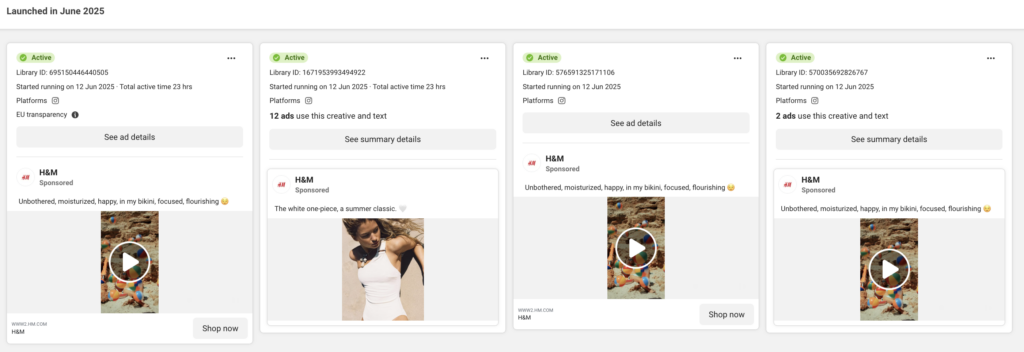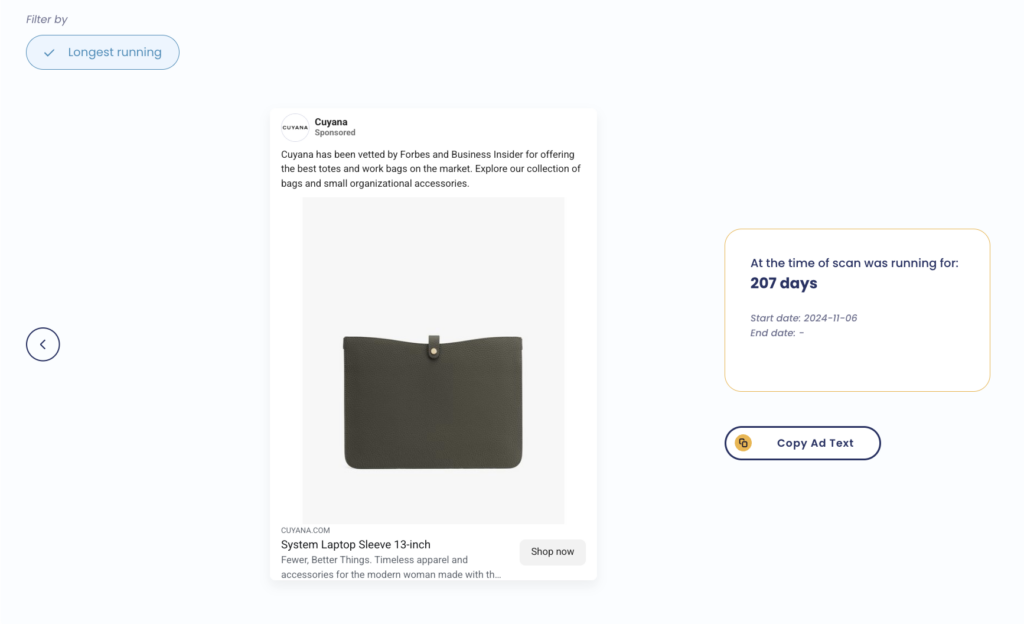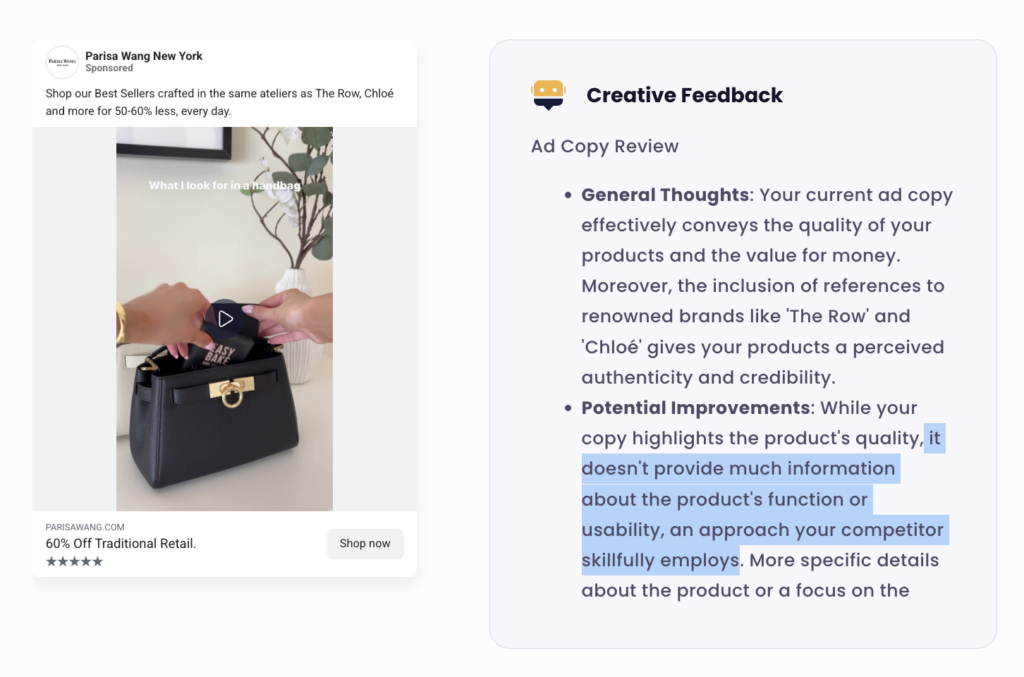When it comes to Meta ads, success doesn’t come from just one magic element — it’s the perfect alignment of technical setup and creative strategy. One without the other? A recipe for wasted budget and missed opportunity.
In our previous blog post, we covered how to set up your Meta campaigns the right way — from pixel tracking and event configuration to campaign structure and audience segmentation.
Today, we’re focusing on the second half of the equation: how to create ad creatives that convert.
This includes both your visuals (what your audience sees) and your copy (what they read). These two elements work together to capture attention, build desire, and ultimately drive results.
Why Creatives Matter (Even More Than You Think)
Even with a flawless campaign setup, if your creative doesn’t stand out or drive action, your ads won’t perform.
Meta’s algorithm favors ads that generate engagement. That engagement begins with creative that looks native to the feed, stops the scroll, and clearly communicates value.
People process visuals 60,000x faster than text. On Facebook and Instagram, where users scroll quickly, you have just a second or two to grab attention. Good creative doesn’t just look good — it performs. It delivers results through strategic design, relevant messaging, and emotional clarity.
Meta prioritizes visually engaging content in its algorithm, and the best-performing ads typically have one thing in common: thumb-stopping creatives.
How to Start with Ad Design
You’ve probably heard it before: your ad visuals need to stop the scroll.
That’s true — but what does that actually mean in practice?
It means creating images or videos that make someone pause, take interest, and feel like what they’re seeing is relevant to them. To do that, you need to start by understanding what kind of visuals your audience already responds to.
Before opening Figma or booking a shoot, take time to research:
-
What your audience shares, saves, and engages with on Instagram or Facebook
-
What kind of creatives your competitors are running (especially those with strong engagement)
-
What adjacent or aspirational brands are doing in their ads or organic posts
You can use tools like the Meta Ad Library to see exactly what other brands in your space are running right now. Just search by brand name or keywords relevant to your niche — it’s free and incredibly useful.
Also, don’t forget that the vast majority of your audience will see your ad on mobile — not desktop. That means your visuals need to be designed for a small screen:
Use vertical or 4:5 formats that take up more feed real estate
Make sure text overlays are legible on mobile
Keep the composition clean and focused so it’s easy to understand at a glance
Remember: every industry has its own visual language. What performs well for a wellness brand might completely flop for fashion or tech. Your job is to study that language and then create visuals that feel native to your audience’s feed, while still standing out.
How to Write Ad Copy That Converts
Strong visuals get people to stop. Good copy gets them to act.
But writing Meta ad copy doesn’t mean cramming in every product detail or being overly clever. The goal is to communicate value clearly and quickly — because you only have a few seconds before someone scrolls on.
Here’s how to approach it.
Your opening line is the most important. It’s what shows up above the fold, and it’s often the difference between someone clicking or skipping.
A few ways to start strong:
Make a bold claim: “The only dress you’ll ever need this summer.”
Ask a relatable question: “Tired of overpaying for basics?”
Lead with social proof: “Over 10,000 customers already made the switch.”
The goal here is to hook attention and create curiosity or connection right away.
And also, speak as a human.
Avoid stiff, over-polished language. Write like you talk. The tone should feel like a trusted recommendation from a friend — confident, clear, and informal.
Don’t say: “Discover our premium garment collection crafted from ethically sourced textiles.”
Instead, say: “Yes, it’s soft. Yes, it’s flattering. And yes — you’ll wear it nonstop.”
Use the MECLABS Framework to Strengthen Your Copy
We covered the MECLABS conversion formula in more detail in a previous blog post, but it’s worth revisiting here because it’s one of the most useful frameworks when writing high-performing ad copy.
At its core, the MECLABS formula helps explain why someone takes action (or doesn’t), and how you can shape your messaging to guide that decision.
The basic idea:
Conversion = Motivation + Value – Friction
In slightly more detail, the full formula looks like this:
C = 4M + 3V + 2I – 2A
Where:
M = Motivation (what the user already wants)
V = Value proposition (why your offer is compelling)
I = Incentive (reason to act now)
A = Anxiety and Friction (what might hold them back)
For ad copy, you don’t need to overthink every part of the formula — just remember what it’s telling you:
Speak directly to what the customer already wants
Clearly communicate what makes your product valuable
Add urgency or incentive where it makes sense
Reduce anything that causes hesitation (lack of clarity, complexity, fear of making the wrong choice)
Even short copy can reflect these principles. For example: “Your new favorite everyday dress. Soft, flattering, and back in stock. Free returns if it’s not a fit.”
In one sentence, you hit motivation (comfort and style), value (it’s a favorite), incentive (back in stock), and reduce friction (free returns).
When you keep MECLABS in mind while writing, your copy becomes sharper, more intentional — and most importantly, more effective.
How to Crate Meta Ads with AI?
AI isn’t here to replace your creative team — it’s here to support it.
Whether you’re a solo marketer or part of a growing brand, AI tools can help you speed up the ad creation process, bring more ideas to the table, and make testing easier. From visual concepts to copywriting drafts, AI gives you a starting point — so you’re never staring at a blank screen or struggling to brief a designer.
You can use AI to:
Explore different visual directions before committing to production
Draft multiple ad copy variations for testing
Get inspiration for hooks, headlines, or offers
Understand what’s trending or what your competitors are doing
In this section, we’ll walk through how to use AI step-by-step for both visuals and copy.
The goal isn’t to automate creativity — it’s to enhance your creative process with more speed, structure, and confidence.
Let’s start with visuals.
Using AI to Improve Your Ad Visuals
When it comes to visuals, AI is most powerful when it helps you make informed creative decisions — not just guess what might work.
Inside Lebesgue’s Competitor Intelligence, you can see every ad your competitors are running, including the ones they’ve turned off. This gives you a huge advantage, because you’re not working in the dark — you can analyze what’s already being tested in your market.
One of the most valuable insights?
You can sort your competitors’ ads by run duration.
If a competitor has kept the same ad live for weeks (or even months), chances are it’s working. These are the visuals worth studying. Ask yourself:
What’s the layout?
How is the product presented?
Is it a video, carousel, or static image?
Does the ad feel polished or more UGC-style?
This kind of insight saves you time — you don’t need to reinvent the wheel. You can create your own version of what’s proven to resonate with your audience.
But that’s not all.
In Lebesgue, you also get direct creative feedback on your own visuals.
The platform identifies weak points in your ads and shows clear, actionable improvements — whether it’s layout issues, missing visual CTAs, or poor format choices for mobile.
No guesswork. Just data-backed creative guidance you can actually use.
So before you open Canva, Figma, or book a shoot — start here. Use what’s already working in your niche and build on top of that with clarity and direction.
Use AI to Help You Create Visuals
Now that you have the information you need — your competitors’ ad strategy, the creatives they’ve been running the longest, and feedback on your own assets — you can actually put that research into action.
This is where AI tools like ChatGPT can become part of your creative process.
Once you’ve identified the type of visuals that work in your niche, you can upload:
A few ad images from your competitors (the ones that have been running the longest)
A photo of your own product
Then, ask ChatGPT to help you generate ad visual concepts that follow the same style and layout, but feature your product instead.
For example, you might say: “Can you create ad visuals similar to these competitor examples, but using this red dress instead?”
Or: “Based on these reference ads, generate a few creative concepts I could use in a Meta carousel using my skincare product.”
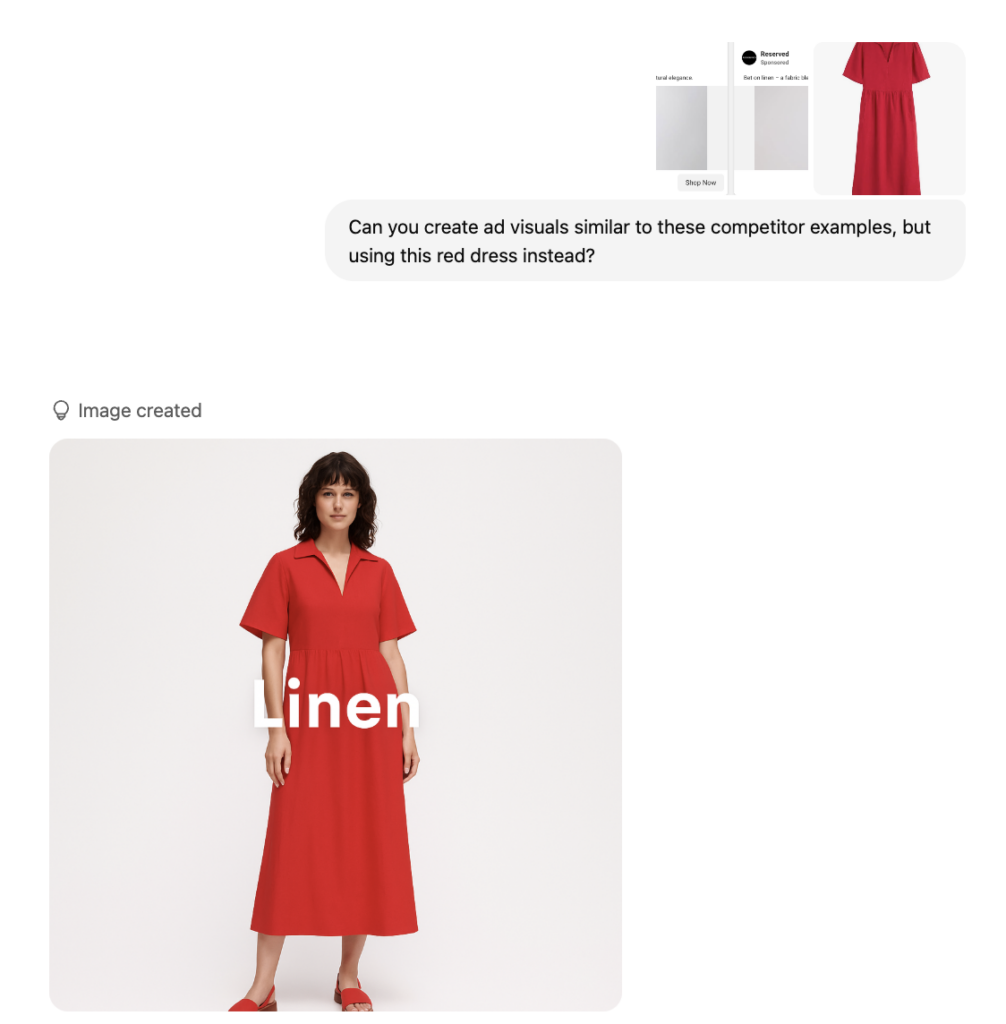
The goal isn’t to copy — it’s to learn what works, adapt the visual structure, and stay consistent with what your target audience is already responding to.
This approach is especially helpful when:
You’re stuck on layout or art direction
You want a consistent visual style across campaigns
You’re preparing a brief for a designer or running your own product shoot
It’s not about handing off your creativity — it’s about accelerating the process and making faster and smarter visual decisions.
Using AI to Help You Write Meta Ad Copy
Once you’ve got your visuals (or at least direction), the next step is writing the copy that ties everything together. And here too, AI — especially tools like ChatGPT — can help speed up your process and give you fresh ideas to test.
But the quality of the output depends on how well you prompt it.
Here are a few practical ways to use ChatGPT for ad copywriting, along with ready-to-use prompts you can try right away.
| Prompt Type | Description & Example Prompt |
|---|---|
| 1. Hook Variations |
Use this to generate first-line copy options from different emotional angles.
“Give me 5 ad hook variations for a red off-shoulder dress. Include different angles like emotional, aspirational, urgency, and social proof.” |
| 2. Full Ad Copy |
Request complete ad copy including hook, product positioning, and call to action.
“Write a Facebook ad for a red off-shoulder gown. The tone should be elegant and modern, no discounts or sales — just focus on the feeling of wearing it and the value of timeless style. End with a direct call to action.” |
| 3. UGC-Style Copy |
Great for customer-style captions or social-proof based storytelling.
“Write a first-person style ad caption for a woman who just wore this red dress to an event and felt amazing. Keep it casual, short, and natural — like a happy customer post.” |
| 4. Problem/Solution |
Use this when positioning a product as a fix for a common frustration or challenge.
“Write ad copy for a shapewear brand that focuses on the problem/solution format. Highlight the discomfort of traditional shapewear and how this one feels comfortable but still supportive.” |
| 5. A/B Variations |
Test multiple angles like benefits, emotion, or social proof in separate ad variations.
“Give me three different Facebook ad copy variations for a premium white cotton dress. One should be benefit-led, one emotion-led, and one focused on social proof.” |
AI won’t write the final version for you — but it will give you fast, usable starting points you can test, tweak, and refine.
You can even combine this with what you learned from competitor copy in Lebesgue to give the prompt more direction: “Here are 3 captions my competitors are using. Can you write something in the same tone, but more premium and emotionally-driven?”
Use the Right Copy for the Right Audience
If you’re struggling to write effective, high-converting ad copy, you’re going to love this next insight.
At Lebesgue, we recently analyzed ad copy from over 4,000 Meta ads to understand what works best — not in theory, but in actual performance — across prospecting and retargeting campaigns.
And the results were clear: Your copy needs to change depending on who you’re talking to.
What Works for Prospecting Campaigns
When you’re targeting cold audiences, the most effective copy tends to be:
Light, easy to skim
Includes emojis to feel native to the feed
Highlights promotions and free shipping
These elements consistently boosted ROAS in prospecting campaigns.
But here’s what didn’t work: Adding urgency or social proof (like reviews or “best seller” messaging) actually lowered ROAS.
And when you think about it, that makes sense. Someone who’s never heard of your brand likely isn’t interested in reviews yet — or in being rushed into a decision. They want to know why they should care first.
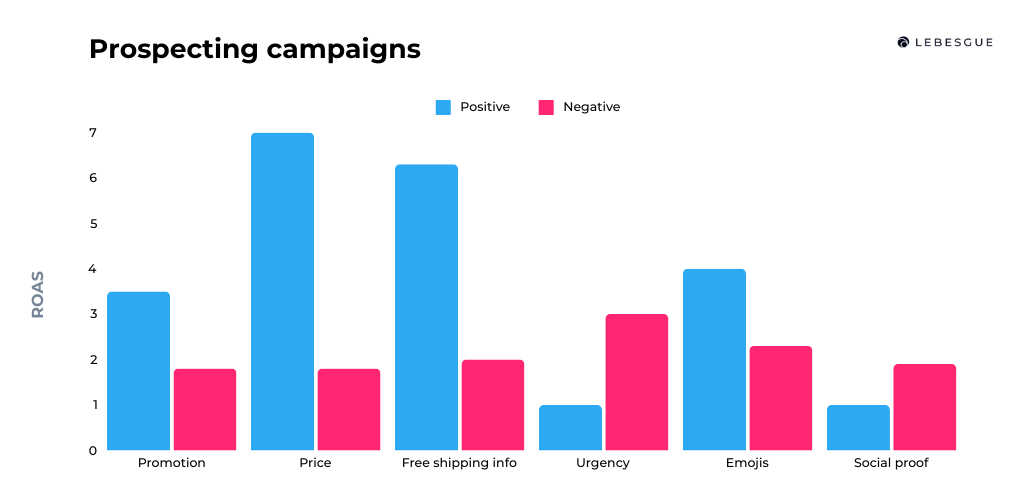
What Works for Retargeting Campaigns
For retargeting audiences — people who have already visited your site or engaged with your brand — the picture shifts.
In this case, using:
Emojis
Free shipping
Urgency
Social proof
…all increased ROAS. These users are warmer, more familiar with your brand, and more likely to convert with that extra push or reassurance.
Reminders like: “Back in stock – but not for long” or “Over 10,000 5-star reviews” can nudge them over the line because they already trust you – they just need a reason to act now.

This analysis makes one thing clear: You can’t treat prospecting and retargeting audiences the same.
Different levels of awareness require different styles of communication.
Trying to use urgency or social proof on someone who just discovered your brand is more likely to create friction than conversions. But for someone who’s already shown interest? It can be the tipping point.
Make sure your messaging, creative, and audience exclusions are aligned — and you’ll see a clear performance lift across both stages of the funnel.
Don’t Forget to Test — But Do It Right
You’ve created the visuals. You’ve written the copy. Now it’s time to test — because even the best-looking ad won’t drive results if it doesn’t actually resonate with your audience.
But testing only works when it’s done strategically.
Here’s what matters most:
Change only one variable at a time.
If you test a new image and new copy and a new CTA all at once, you won’t know what actually made the difference.Be consistent with structure.
Test the same creative with different hooks. Or the same hook with different visuals. Keep one thing stable so you get clear answers.Let the data speak.
Don’t kill a test after one day. Let it run long enough to gather statistically useful results.
If you want the full breakdown, we already covered how to structure and run creative tests — but the main takeaway is this: test smart, not randomly.
That’s how you turn good creatives into top-performers.
Summing Up
When it comes to running profitable Meta ads, creative isn’t something you can afford to treat as an afterthought. It’s often the biggest lever in your performance.
But good creative doesn’t mean guessing. With the right structure, research, and tools — you can make better decisions, faster.
Understand who you’re speaking to. Use insights from your competitors. Adapt your visuals and copy to where the customer is in their journey. And test with intention — not by mixing everything at once.
You don’t need to overcomplicate it. You just need to approach your creative with the same clarity and structure you bring to your media buying.
That’s what separates ads that blend in from ads that convert.

